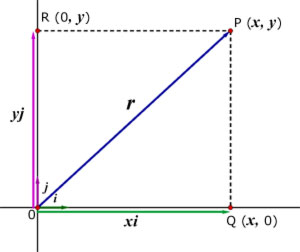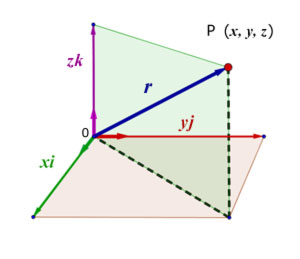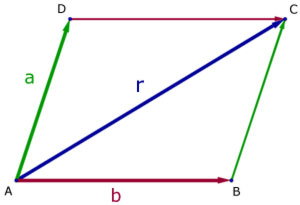Home >> PURE MATHS, Vectors, general properties
first principles |
Notation
A non-zero vector has the magnitude of a positive real number and a direction in space.
Representation is by two letters describing a line.
The order of the letters indicates the direction and the length of the line its magnitude.

An alternative to this notation is to use a single bold letter, for example C.
Then the magnitude is |C| or C.
The Unit Vector
A unit vector eg a, has a magnitude of one |a|=1 and can point in any direction.
A unit vector is usually written with a circumflex accent over it â.
Examples: 1 Newton, 1 ms-1 , 1 metre etc.
Hence, if A is an ordinary vector,

Â('A' hat) is a unit vector in the direction of A.
2D Representation
P is a point in the x-y plane with coodinates (x,y).
i is the unit vector along the x-axis.
j is the unit vector along the y-axis.
With Q at (x,0) and R at (0, y):


3D Representation
P is a point in x-y-z space with coodinates (x, y, z).
i is the unit vector along the x-axis.
j is the unit vector along the y-axis.
z is the unit vector along the z-axis.


Addition(Sum) of Vectors
This is also called the Parallelogram or Triangle Law.
If two vectors(a & b) are represented in magnitude and direction by the adjacent sides of a parallelogram from a point, then their resultant(r) is represented in magnitude and direction by the diagonal of the parallelogram passing through the point.


If two vectors are represented in magnitude and direction by the adjacent sides of a triangle, taken in order, then their resultant is represented in magnitude but opposite in direction by the third side.

Scalar Multiplication
Multiplying a vector by a scalar quantity changes its magnitude but not its direction.

[ About ] [ FAQ ] [ Links ] [ Terms & Conditions ] [ Privacy ] [ Site Map ] [ Contact ]
